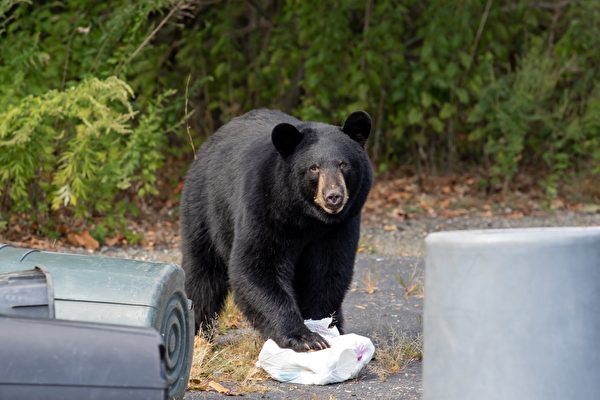For the past six months, a remote town in Northern California has been dealing with a series of black bear intrusions into schools and residences in search of food. What was once a nuisance for the local residents has now escalated into a deadly threat.
Downieville, a town near Tahoe State, located about 60 miles northwest of Truckee, has inhabitants who are accustomed to coexisting with wildlife, including bears. They make sure to properly dispose of garbage and not leave bird feeders outdoors.
However, the concerns of the local residents began to intensify since the tragic death of Patrice Miller, an elderly woman who was attacked by a black bear in her home last November. Jim Johnston, the former school principal and education director, stated, “This community has been used to living alongside bears, but when bears become too aggressive, people naturally feel uneasy.”
Officials from the California Department of Fish and Wildlife mentioned that the 71-year-old Miller was the first known victim of a fatal black bear attack in California.
Miller’s body was found in a local store after a clerk realized she had not been seen for days. Due to Miller’s health issues, the clerk had requested the sheriff to check on her.
Sheriff Mike Fisher of Sierra County stated that when officers arrived at Miller’s home, they found that she had already passed away.
The sheriff mentioned that her body appeared to have been consumed by bears for several days, “Initially, we thought the bears had come into contact with her after she had died.”
Neighbors told Johnston that Miller had been feeding the bear.
Following this, Fisher requested Placer County’s assistance for a postmortem examination. A pathologist involved in the investigation consulted with a colleague familiar with bear attack cases, and they ultimately confirmed that Miller had died from a bear attack. DNA evidence indicated that it was a male black bear.
“This changed the game,” Fisher said.
Investigations are ongoing, and officers have had to chase away bears returning to Miller’s rented house daily.
The sheriff tried to have the bear captured by the California Department of Fish and Wildlife, but California law stipulates that a request must be made by the homeowner, leading to frustration.
“I had to tell them, the homeowner has been consumed by a bear,” Fisher said, but this explanation was not accepted.
Fisher mentioned that he eventually got in touch with the landlord and had him sign the capture consent forms. Two days later, officials from the state wildlife department finally appeared and captured the bear.
However, after examining the bear, they refused to euthanize it and identified it as a female. A fisheries and wildlife biologist told the sheriff that she was instructed by superiors to release the bear.
“I wanted to sedate the bear to confirm its gender,” Fisher said, “In the end, I impounded the bear and the trap, padlocked it, and directed that the bear could not be released without my consent. I was told it drew attention.”
Despite disagreements with the state government, Fisher succeeded in having the biologist tranquilize the bear, gaining enough time to confirm it was male and obtain its DNA sample. These DNA samples matched the ones collected during Miller’s autopsy, leading the authorities to euthanize the bear.
Fisher mentioned that after Miller’s tragic death, another bear entered the local high school and several other residences.
The sheriff pointed out that bear sightings in the county had decreased as winter approached, but since last month, bear sightings have resurfaced. Three bears started roaming in the Downieville area, two black bears and one cinnamon-colored bear.
“That cinnamon bear started causing trouble in our community,” Fisher said, “We documented at least five incidents of bear break-ins into homes.”
According to Fisher, in some of these incidents, homeowners were present; furthermore, one store owner reported a bear breaking into their shop, resulting in significant losses.
In another incident, an elderly person woke up on the couch to find a bear standing in the living room.
This time, the sheriff decided to take action himself, having classified the bear as a threat to public safety under the California Fish and Wildlife Code. He directly contacted federal hunters, and the bear was subsequently captured and euthanized.
The cinnamon-colored bear attempted to break into the local high school gym and cafeteria, then tried to force entry into another residence. An on-duty officer located the bear and shot it dead with a patrol rifle.
“I will never prioritize wildlife protection above public safety,” Fisher emphasized.
He explained that the increased bear incidents were not the only concern for local residents. They also faced challenges with California’s wildlife regulations, which limited their ability to protect the community from future bear attacks.
Fisher mentioned that recent policy changes, possibly influenced by environmental advocacy groups, seemed to prioritize wildlife protection while limiting the authority of local wildlife officers in handling dangerous bears. Such decisions might be overlooking the importance of public safety.
“Whether it’s dealing with bear or mountain lion issues in California, it seems that common sense has been overlooked,” Fisher said, “There seems to be a disconnect between public safety and wildlife management.”
Johnston, who has been away from the community for two years but remains in contact, mentioned that local residents support the sheriff’s approach in handling the bear problems.
“Living in the forest, mountain lions and bears are common neighbors, learning to take proper action is necessary,” Johnston said, “The residents of Downieville are used to living in nature and looking after themselves. They strongly support the sheriff’s office in actively addressing the wild bear issues.”
He added, “For Downieville, people here protect the bears but prioritize human well-being.”

